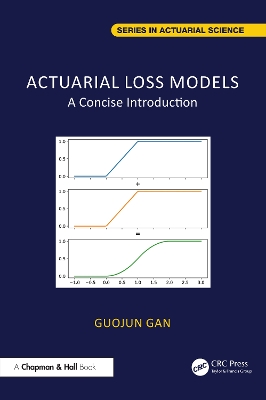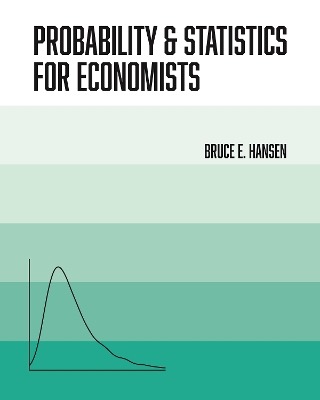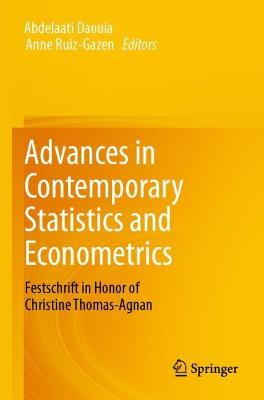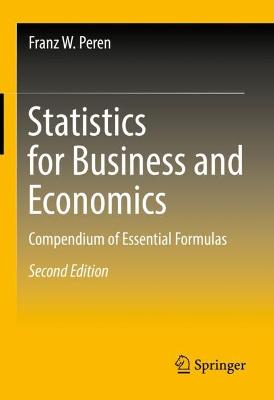Essential Mathematics for Economics
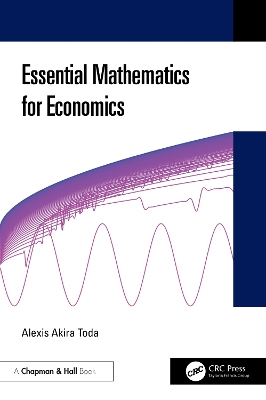 portes grátis
portes grátis
Essential Mathematics for Economics
Toda, Alexis Akira
Taylor & Francis Ltd
10/2024
286
Mole
9781032698946
Pré-lançamento - envio 15 a 20 dias após a sua edição
Descrição não disponível.
0. Roadmap. Section I. Introduction to Optimization. 1. Existence of Solutions. 1.1. Introduction. 1.2. The Real Number System. 1.3. Convergence of Sequences. 1.4. The Space rn. 1.5. Topology of rn. 1.6. Continuous Functions. 1.7. Extreme Value Theorem. 1.A. Topological Space. 2. One-Variable Optimization. 2.1. Introduction. 2.2. Differentiation. 2.3. Necessary Condition. 2.4. Mean Value and Taylor's Theorem. 2.5. Sufficient Condition. 2.6. Optimal Savings Problem. 3. Multi-Variable Unconstrained Optimization. 3.1. Introduction. 3.2. Linear Maps and Matrices. 3.3. Differentiation. 3.4. Chain Rule. 3.5. Necessary Condition. 4. Introduction to Constrained Optimization. 4.1. Introduction. 4.2. One Linear Constraint. 4.3. Multiple Linear Constraints. 4.4. Karush-Kuhn-Tucker Theorem. 4.5. Inequality and Equality Constraints. 4.6. Constrained Maximization. 4.7. Dropping Nonnegativity Constraints. Section II. Matrix and Nonlinear Analysis. 5. Vector Space, Matrix, and Determinant. 5.1. Introduction. 5.2. Vector Space. 5.3. Solving Linear Equations. 5.4. Determinant. 6. Spectral Theory. 6.1. Introduction. 6.2. Eigenvalue and Eigenvector. 6.3. Diagonalization. 6.4. Inner Product and Norm. 6.5. Upper Triangularization. 6.6. Positive Definite Matrices. 6.7. Second-Order Optimality Condition. 6.8. Matrix Norm and Spectral Radius. 7. Metric Space and Contraction. 7.1. Metric Space. 7.2. Completeness and Banach Space. 7.3. Contraction Mapping Theorem. 7.4. Blackwell's Sufficient Condition. 7.5. Perov Contraction. 7.6. Parametric Continuity of Fixed Point. 8. Implicit Function and Stable Manifold Theorem. 8.1. Introduction. 8.2. Inverse Function Theorem. 8.3. Implicit Function Theorem. 8.4. Optimal Savings Problem. 8.5. Optimal Portfolio Problem. 8.6. Stable Manifold Theorem. 8.7. Overlapping Generations Model. 9. Nonnegative Matrices. 9.1. Introduction. 9.2. Markov Chain. 9.3. Perron's Theorem. 9.4. Irreducible Nonnegative Matrices. 9.5. Metzler Matrices. Section III. Convex and Nonlinear Optimization. 10. Convex Sets. 10.1. Convex Sets. 10.2. Convex Hull. 10.3. Hyperplanes and Half Spaces. 10.4. Separation of Convex Sets. 10.5. Cone and Dual Cone. 10.6. No-Arbitrage Asset Pricing. 11. Convex Functions. 11.1. Convex and Quasi-Convex Functions. 11.2. Convexity-Preserving Operations. 11.3. Differential Characterization. 11.4. Continuity of Convex Functions. 11.5. Homogeneous Quasi-Convex Functions. 11.6. Log-Convex Functions. 12. Nonlinear Programming. 12.1. Introduction. 12.2. Necessary Condition. 12.3. Karush-Kuhn-Tucker Theorem. 12.4. Constraint Qualifications. 12.5. Saddle Point Theorem. 12.6. Duality. 12.7. Sufficient Conditions. 12.8. Parametric Differentiability. 12.9. Parametric Continuity. Section IV. Dynamic Optimization. 13. Introduction to Dynamic Programming. 13.1. Introduction. 13.2. Knapsack Problem. 13.3. Shortest Path Problem. 13.4. Optimal Savings Problem. 13.5. Optimal Stopping Problem. 13.6. Secretary Problem. 13.7. Abstract Formulation. 14. Contraction Methods. 14.1. Introduction. 14.2. Markov Dynamic Program. 14.3. Sequential and Recursive Formulations. 14.4. Properties of Value Function. 14.5. Restricting Spaces. 14.6. State-Dependent Discounting. 14.7. Weighted Supremum Norm. 14.8. Numerical Dynamic Programming. 15. Variational Methods. 15.1. Introduction. 15.2. Euler Equation. 15.3. Transversality Condition. 15.4. Stochastic Case. 15.5. Optimal Savings Problem.
Este título pertence ao(s) assunto(s) indicados(s). Para ver outros títulos clique no assunto desejado.
microeconomics;optimization;analysis;linear programming;econometrics;numerical analysis
0. Roadmap. Section I. Introduction to Optimization. 1. Existence of Solutions. 1.1. Introduction. 1.2. The Real Number System. 1.3. Convergence of Sequences. 1.4. The Space rn. 1.5. Topology of rn. 1.6. Continuous Functions. 1.7. Extreme Value Theorem. 1.A. Topological Space. 2. One-Variable Optimization. 2.1. Introduction. 2.2. Differentiation. 2.3. Necessary Condition. 2.4. Mean Value and Taylor's Theorem. 2.5. Sufficient Condition. 2.6. Optimal Savings Problem. 3. Multi-Variable Unconstrained Optimization. 3.1. Introduction. 3.2. Linear Maps and Matrices. 3.3. Differentiation. 3.4. Chain Rule. 3.5. Necessary Condition. 4. Introduction to Constrained Optimization. 4.1. Introduction. 4.2. One Linear Constraint. 4.3. Multiple Linear Constraints. 4.4. Karush-Kuhn-Tucker Theorem. 4.5. Inequality and Equality Constraints. 4.6. Constrained Maximization. 4.7. Dropping Nonnegativity Constraints. Section II. Matrix and Nonlinear Analysis. 5. Vector Space, Matrix, and Determinant. 5.1. Introduction. 5.2. Vector Space. 5.3. Solving Linear Equations. 5.4. Determinant. 6. Spectral Theory. 6.1. Introduction. 6.2. Eigenvalue and Eigenvector. 6.3. Diagonalization. 6.4. Inner Product and Norm. 6.5. Upper Triangularization. 6.6. Positive Definite Matrices. 6.7. Second-Order Optimality Condition. 6.8. Matrix Norm and Spectral Radius. 7. Metric Space and Contraction. 7.1. Metric Space. 7.2. Completeness and Banach Space. 7.3. Contraction Mapping Theorem. 7.4. Blackwell's Sufficient Condition. 7.5. Perov Contraction. 7.6. Parametric Continuity of Fixed Point. 8. Implicit Function and Stable Manifold Theorem. 8.1. Introduction. 8.2. Inverse Function Theorem. 8.3. Implicit Function Theorem. 8.4. Optimal Savings Problem. 8.5. Optimal Portfolio Problem. 8.6. Stable Manifold Theorem. 8.7. Overlapping Generations Model. 9. Nonnegative Matrices. 9.1. Introduction. 9.2. Markov Chain. 9.3. Perron's Theorem. 9.4. Irreducible Nonnegative Matrices. 9.5. Metzler Matrices. Section III. Convex and Nonlinear Optimization. 10. Convex Sets. 10.1. Convex Sets. 10.2. Convex Hull. 10.3. Hyperplanes and Half Spaces. 10.4. Separation of Convex Sets. 10.5. Cone and Dual Cone. 10.6. No-Arbitrage Asset Pricing. 11. Convex Functions. 11.1. Convex and Quasi-Convex Functions. 11.2. Convexity-Preserving Operations. 11.3. Differential Characterization. 11.4. Continuity of Convex Functions. 11.5. Homogeneous Quasi-Convex Functions. 11.6. Log-Convex Functions. 12. Nonlinear Programming. 12.1. Introduction. 12.2. Necessary Condition. 12.3. Karush-Kuhn-Tucker Theorem. 12.4. Constraint Qualifications. 12.5. Saddle Point Theorem. 12.6. Duality. 12.7. Sufficient Conditions. 12.8. Parametric Differentiability. 12.9. Parametric Continuity. Section IV. Dynamic Optimization. 13. Introduction to Dynamic Programming. 13.1. Introduction. 13.2. Knapsack Problem. 13.3. Shortest Path Problem. 13.4. Optimal Savings Problem. 13.5. Optimal Stopping Problem. 13.6. Secretary Problem. 13.7. Abstract Formulation. 14. Contraction Methods. 14.1. Introduction. 14.2. Markov Dynamic Program. 14.3. Sequential and Recursive Formulations. 14.4. Properties of Value Function. 14.5. Restricting Spaces. 14.6. State-Dependent Discounting. 14.7. Weighted Supremum Norm. 14.8. Numerical Dynamic Programming. 15. Variational Methods. 15.1. Introduction. 15.2. Euler Equation. 15.3. Transversality Condition. 15.4. Stochastic Case. 15.5. Optimal Savings Problem.
Este título pertence ao(s) assunto(s) indicados(s). Para ver outros títulos clique no assunto desejado.


